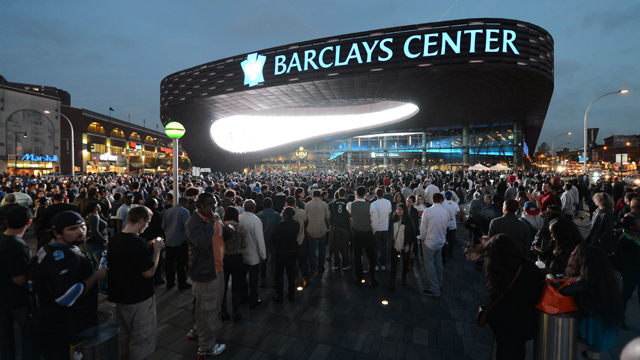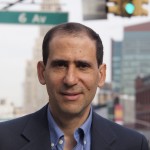
The Barclays Center, home of the Brooklyn Nets, cost an estimated $1 billion to construct, with taxpayer subsidies accounting for about $273 million, according to the Independent Budget Office. The Nets, with a value of $530 million, are primarily owned by Russian Mikhail Dmitrievitch Prokhorov, who has a net worth of $13.4 billion. (AP Photo/Henny Ray Abrams, File)
Boosters like New York City Mayor Mike Bloomberg credit the Barclays Center, the sports and entertainment arena that opened in Brooklyn last year, with spotlighting the borough, as it houses the NBA’s Brooklyn Nets and has hosted high-profile concerts, including Jay-Z, the Rolling Stones and Barbra Streisand.

Norman Oder
The hype has obscured how a major league sports team was used to leverage eminent domain for a larger project involving 16 towers, as well as subsidies and tax breaks for developer Forest City Ratner Companies, founded and run by Bruce Ratner.
The Barclays Center is part of The Atlantic Yards project, announced in December 2003, which encompasses 22 acres in Brooklyn. Expected to include 6,430 apartments, 2,250 of them subsidized, plus office, retail and hotel space, it was approved in 2006 with a ten-year timeline. In 2009, state overseers agreed to extend the timeline to 25 years. The first residential tower, long delayed, is under construction and due in late 2014.
The New York Times last year described Ratner as having a “reputation for promising anything to get a deal, only to renegotiate relentlessly for more favorable terms.”
Ratner claims the arena’s had “tremendous” impact on the local economy, but, outside of some bars and restaurants, the picture is quite mixed. “We’re good at [marketing],” Ratner says, and he’s right: his company has gotten mileage from the 2,000 mostly part-time, mostly low-paying jobs that Barclays Center has created.
But what happened to the once-promised 10,000 office jobs and 15,000 construction jobs? Few remember that the New York City Independent Budget Office estimated that the arena would be a money-loser for the city.
Most visitors take the subway, given the arena’s adjacent to a major transit hub, to which the developer built a new subway entrance. Yes, once-feared “carmageddon” gridlock has been avoided, though drivers seeking free parking flood the residential blocks near the arena, as do idling limos. During some concerts, leaking bass sounds cause nearby apartments to vibrate.
The pinnacle of Brooklyn commodification came with the MTV Video Music Awards, held Aug. 25, with a red carpet pre-show on residential blocks bordering the back of Barclays.
For some locals, it was a great block party. Others, however, were hemmed in by extras on their stoops, saw their gardens trashed, and had light and noise disturb their kids’ sleep. Though the arena was “designed to minimize” its impact on residents, according to state overseers, the Bloomberg administration, happy to welcome a high-profile event, had bowed to accommodate MTV.
“Money talks,” one frustrated local observed wearily after the event. That could be an epitaph for much regarding the Barclays Center.
Norman Oder is a Brooklyn-based journalist who writes the Atlantic Yards Report blog. He is currently working on a book about the project.








